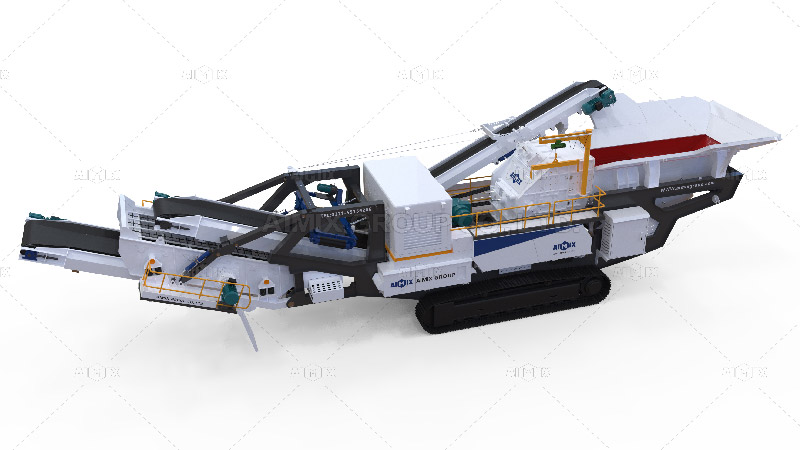Setting up a stone crushing plant is a complex process that requires careful planning, precise execution, and an understanding of both the equipment and the operational requirements. Whether you're working with a stationary or mobile stone crusher, the installation must be done in a way that ensures optimal production efficiency and longevity of the equipment. In this article, we will discuss the steps involved in installing a stone crushing plant, the factors to consider during installation, and how to ensure that everything runs smoothly for the long term.
Site Selection and Preparation
Before installing any equipment, the first step is to choose an appropriate site for your stone crusher plant(plantas trituradoras de piedra). This site should be close to the source of raw materials, such as a quarry or mining site, to minimize transportation costs. The location should also have easy access to roads and utilities, including water and electricity, to support the plant’s operations. It’s important to conduct a thorough site survey, considering factors such as terrain, soil quality, and local regulations related to construction and environmental impact.
Environmental Considerations
Environmental impact is a crucial aspect of setting up a stone crusher plant, especially in the mining and aggregate industries. You must ensure that the plant's installation complies with local environmental laws and regulations. This may involve conducting environmental impact assessments, implementing dust control systems, and establishing measures to prevent noise and water pollution. Installing proper drainage systems to manage rainwater and waste materials is also essential to maintain a sustainable operation.
Planning for Space and Infrastructure
The layout of the stone crushing plant should be planned to optimize workflow. Sufficient space should be allocated for raw material storage, crushing units, and the stockpiling of processed aggregates. It is also necessary to ensure that there is space for maintenance, equipment storage, and future expansion. The site should be equipped with the necessary infrastructure, such as power supply, water access, and waste management systems, to support the plant’s daily operations.
Installation of Equipment
Once the site has been prepared, the next step is to install the stone crusher plant. Whether you're installing a stationary aggregate crusher plant or a mobile stone crusher(vendo trituradora de piedra móvil), each piece of equipment must be carefully positioned and secured. Proper installation is essential to ensure the longevity and efficiency of the plant, as improper setup can lead to operational issues, increased wear and tear, and safety risks.
Setting Up Crushers and Feeders
The heart of any stone crushing plant is the crusher itself. Depending on the type of plant, you may be using jaw crushers, cone crushers, or impact crushers. The installation of crushers should follow the manufacturer's guidelines to ensure proper functioning. Additionally, feeders are required to regulate the flow of raw materials into the crusher. These should be installed in a way that ensures a consistent supply of material without overloading the system.
Conveyor Belt Systems and Screening Units
After the raw materials are fed into the crusher, they are typically transported via conveyor belts to the next stages of the crushing process. Conveyor belt systems should be installed at appropriate angles and distances to ensure that materials are moved efficiently from one stage to another. Screening units are also crucial for separating different sizes of aggregates(planta trituradora de agregados). These should be installed with proper calibration to achieve the desired final product size and quality.
Electrical and Control Systems
Proper electrical wiring and control systems are critical for the safe and efficient operation of the stone crushing plant. These systems should be installed by qualified professionals and should comply with all local safety regulations. A control room should be set up to monitor the entire operation, including the crushers, feeders, conveyors, and screening units. Automation can be incorporated to optimize performance, such as adjusting feed rates and controlling crusher settings remotely to maintain optimal conditions.
Safety Measures During Installation
Safety is paramount during the installation process. All workers should be provided with proper personal protective equipment (PPE), including helmets, gloves, and safety shoes. Equipment should be installed in a way that minimizes the risk of accidents, with safety barriers around moving parts and emergency shutdown systems in place. Additionally, clear signage should be used to indicate hazard zones, and safety drills should be conducted to ensure that all personnel are prepared for emergencies.
Testing and Commissioning
After installation, the stone crusher plant should go through a thorough testing and commissioning process. This involves running the plant in dry conditions before introducing any raw materials. The aim is to check the functionality of all systems, including crushers, feeders, conveyors, and electrical systems, to ensure everything is working as expected. During testing, adjustments may be needed to optimize the plant's performance. Once the testing phase is complete, the plant can be officially commissioned and start full-scale operations.
Ongoing Maintenance and Monitoring
Installation is not the end of the process—ongoing maintenance is key to ensuring the long-term success of the plant. Routine checks should be performed on crushers, conveyor systems, and electrical components. Preventive maintenance practices should be in place to identify and address potential issues before they cause significant downtime. Monitoring systems can also be used to track the plant’s performance and alert operators to any problems that require attention.
Conclusion
Installing a stone crushing plant requires careful planning, technical expertise, and attention to detail. Whether you're setting up a stationary aggregate crusher plant or a mobile stone crusher, the installation process must ensure the safety, efficiency, and sustainability of the operation. By selecting the right site, installing equipment properly, and focusing on ongoing maintenance and testing, you can ensure that your stone crushing plant runs smoothly and efficiently for years to come. With the right setup, the plant will provide the high-quality aggregates needed for construction projects and contribute to the success of the mining and aggregate industries.


Comments
No comments yet. Be the first to react!